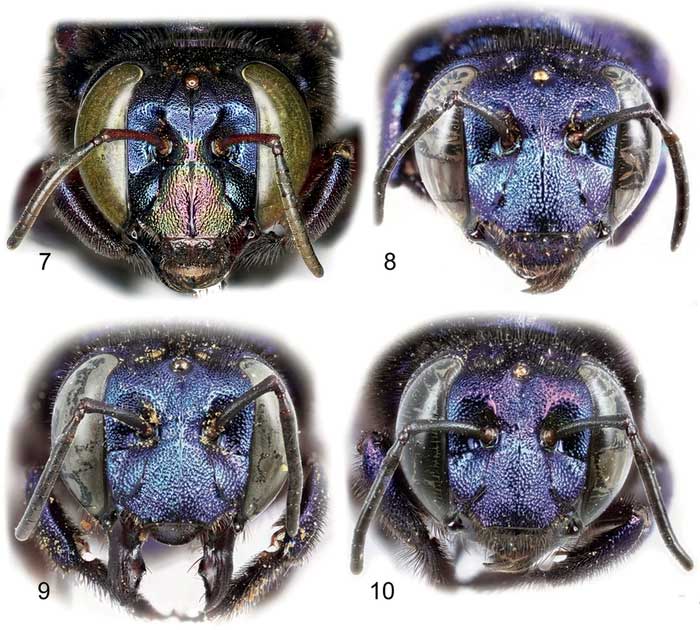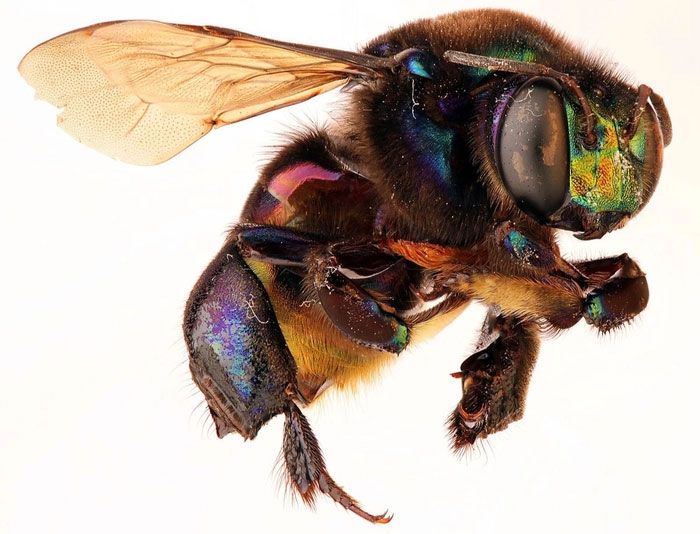Entomologists have described a new species belonging to the neotropical orchid bee genus Eufriesea from the Islas Marías of Nayarit, Mexico, located in the Pacific.
Eufriesea is a genus comprising over 60 species of bees in the Euglossini tribe, commonly known as orchid bees, euglossine bees, or long-tongued bees.
These bees are easily recognized by their large, robust bodies that exhibit metallic colors ranging from black to blue or green, often with golden, red, or purple sheen.
They play a crucial role in pollinating orchids and many other types of plants. The males of this species frequently visit orchid flowers to collect various essential oils, which they bring back to their nests, likely to attract females.
Most Eufriesea species are active for only a few months during the rainy season.

Orchid bees can be considered living jewels in the insect world due to their strikingly vibrant colors such as green, blue, and gold. Compared to other bee species in the same habitat, they stand out to the extent that they can be regarded as one of the most visually impressive insects on the planet.
Like all orchid bee species, they are restricted to the Neotropical region, primarily in South America.
The newly discovered species is the first of its genus known from an island in the Pacific.
Named Eufriesea insularis, it was found on Isla María Madre, the largest island of the Islas Marías – an archipelago consisting of four islands located about 100 km off the coast of Nayarit, Mexico.
Dr. Ricardo Ayala from the National Autonomous University stated: “This archipelago was designated a UNESCO Biosphere Reserve in 2010 by UNESCO and the Mexican Government, and it is protected by Mexico’s Ministry of Environment and Natural Resources.”
“The vegetation on the Islas Marías is primarily tropical dry forest, but part of the island has scrubland, while denser and taller woody vegetation is concentrated in the canyons.”

However, it is not just their striking appearance that sets them apart from other bee species. In fact, orchid bees do not produce honey; they do not build hives, and most orchid bee species worldwide are solitary. They only collect pollen and mix it to create their own “perfume” to attract females.
Eufriesea insularis belongs to the Eufriesea coerulescens species group.
Researchers noted: “This species group includes six species that are likely restricted to Mexico, found along tropical dry forests, as well as in pine and oak forests, from sea level to about 1,500 meters in elevation.”
“Eufriesea coerulescens, the most common species in the group, has also been recorded from the Guadalupe Mountains in western Texas and southeastern New Mexico, USA.”
Eufriesea insularis is identified by its dark green exoskeleton with a purple sheen, black hair, dark wings, and a green clypeus with purple hues and a prominent raised ridge along the midline.

There are approximately 200 different species of orchid bees known to humans, distributed across five genera: Euglossa, Eulaema, Eufriesea, Exaerete, and Aglae – with only one species. All of them are found only in South America or Central America, with a few species found in the United States. Except for the genus Eulaema, all species in the remaining four genera possess brilliant metallic colors, primarily green, gold, and blue.
The females collect pollen and nectar as food, building nests from various materials such as plants, resin, mud, and other substances. The young bees leave the nest and begin their independent lives immediately after hatching, never returning.
This species does not produce honey like their relatives; they typically use their specially long tongues, which are twice their body length, to gather nectar and pollen. However, the males have an additional task of collecting scents and creating a unique perfume to impress the females. They use their front legs to gather fragrances and store them in special pouches on their hind legs. During mating season, the males perch on trees and open their scent pouches to mark their territory, flying around to attract mates.


















































